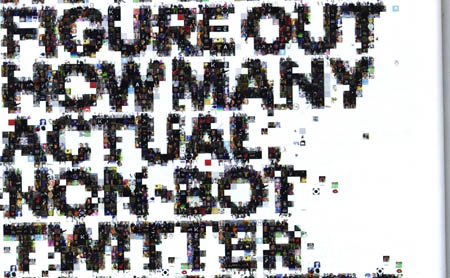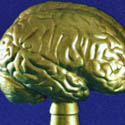Mr. Know-It-All: Twitter Followers, Language Learning, Cell-Phone Bloodshed
By Brendan I. Koerner | 05.22.12 1:53 PM

How do I figure out how many actual non-bot twitter followers I have?
A true master of disguise—say, Zartan from G.I. Joe—would chortle at the average Twitter bot’s lame attempts at camouflage. (Zartan chortles, right? Well, whatever—you get the idea.) Most of your nonhuman followers betray their artificiality with gibberish updates, dodgy links, or icons featuring plasticky gals who claim their husbands are out of town. These oafish bots are easy pickings for automated culling services like TwitBlock or Safego. But those services are often fooled by borderline cases. “The difficulty is mainly in telling sophisticated bots from very unsophisticated humans,” says Steven Gianvecchio, a senior scientist at Mitre, a research nonprofit. Indeed, when I applied TwitBlock to my list of followers, several carbon-based life-forms got caught in the dragnet, having been fingered for crimes like infrequent tweeting or too many “@” replies. (Note to @alexcorbett: Step up your game, dude.) Some bots, meanwhile, avoided detection, primarily because they swipe tweets from human feeds. If you’re serious about weeding out the bots, you need to edit your followers by hand. Gianvecchio recommends focusing on whether a follower has duplicate tweets, shares the same link multiple times, or tweets primarily from API rather than the web or a mobile platform. After you see a dozen bots, you’ll develop a sixth sense for their tricks. No time for that? Then accept that getting tracked by a few porn merchants is an annoying but relatively benign fact of Twitter life. Like Justin Bieber jokes.
I’m a college student torn between learning a foreign language or a programming language. Which will bring me more money down the line?
How long is this line of which you speak? If you’re referring to the eternity between now and your 30th birthday, then coding is the quicker path to riches. According to the Bureau of Labor Statistics, computer programmers enjoy a mean annual wage of $76,010, while the figure for software developers is $100,420. And if you specialize in a hot language like HTML5, you’ll be shopping for Audis soon enough. Mastering a foreign language, by contrast, doesn’t automatically set you on a lucrative career path—there are no great riches in teaching, translation, or diplomacy. But your Mandarin or Tagalog or Xhosa could pay off handsomely later on, provided you have grand corporate ambitions. “Business doesn’t take place only at the conference table,” says Martha Abbott, executive director at the American Council on the Teaching of Foreign Languages. “A lot of it gets done in social situations. And if you can’t communicate with people in those situations, you’re really losing out.” The choice, then, comes down to how you envision spending the half-century between getting your degree and devoting your life to bingo and early-bird specials. Didn’t think you’d have to contemplate such weighty matters at such a tender age, eh? Well, you probably should. But not now—it’s beer-thirty!
Why do cell phones contain elements like tantalum that cause bloodshed in the Democratic Republic of Congo? Is there really no alternative?
Blame Mother Nature. This planet of ours is made up of fewer than eight dozen naturally occurring elements, many of which are useless in consumer electronics (I’m looking at you, bromine). Engineers have only so many metals to choose from when designing the capacitors that power cell phones, and none can match tantalum’s might. “The thing about tantalum is that it has these wonderful dielectric properties,” says Amit Bandyopadhyay, a materials science professor at Washington State University. In layman’s terms, that means tantalum does an unparalleled job of cramming boatloads of electric charge into tiny packages. Cell phone capacitors coated with tantalum pentoxide are three times more efficient than those made from aluminum oxide. Sure, with enough time and money, engineers could probably construct tantalum-free phones. But we’d likely end up with clunkier, pricier handsets. Is Joe Consumer ready to swap his $199 Droid for a $3,000 phone that looks like a prop from Miami Vice? Anyway, ditching tantalum would do Congo more long-term harm than good. It’s not the element itself that’s to blame for the nation’s woes; it’s the lack of governance that allows warlords to control the mines. Tantalum can be a boon to the Congolese people, but only if consumers give a damn about how it’s extracted. Do your part by reading the annual reports on mineral supplies that phone manufacturers are now required to publish. Then spread the word about who’s doing right and who’s cheating—social media isn’t just for Justin Bieber jokes, you know. (We get it, he looks like a girl.)









